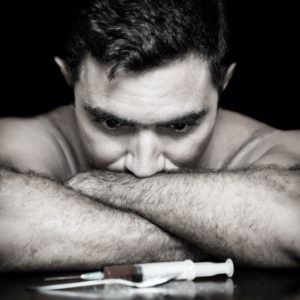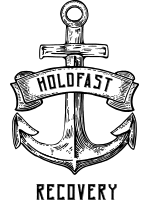
If you’ve just had a relapse and you’re researching what to do after relapse, you should feel incredibly proud. You’re not in denial, and you’re not hiding your head in the sand. Addiction is a chronic disease. That means that even when you go to rehab and get your symptoms under control, it’s not cured in the way an infection can be cured with antibiotics.
Substance use disorders occur for a mixture of genetic, environmental, and social reasons. It’s highly complex, but often a compulsion to numb or alter your consciousness comes from deep-rooted trauma. If something triggers that trauma or you stop the recommended maintenance, relapse is a strong possibility. Please remember that if you do relapse, you’re not bad at recovery and you haven’t done anything wrong. You just need to get back on track.
Why Does Relapse Happen?
Just like the reasons for substance use disorders taking hold in the first place, relapse is incredibly complicated. There isn’t usually just one reason, although there might be a big event that tips you over the edge.
Two of the most prevalent causes of relapse are traumatic events and the belief that your addiction is no longer a problem. The latter is a matter of complacency, although that’s still not to say you’ve done anything wrong.
If this has happened, addiction hasn’t been explained to you properly — or you’ve miscalculated the risks. It’s easy to slowly drift away from the habits and skills you learn during rehab and fall back into old ways. That’s why we recommend continuing to attend peer support meetings indefinitely. Without the active support of a community, it’s easy to slip back into an unhealthy lifestyle.
Relapse as a result of triggers could be a sign that you have unresolved trauma that needs dealing with. In therapy, you learn a litany of coping mechanisms to help you deal with anything life throws at you without turning to drugs. If you still find it difficult to cope when challenging emotions arise, you might have an undiagnosed mental health condition.
Whatever the reasons for relapsing, it doesn’t mean that your recovery has failed. A lot of people experience a relapse at some point — it’s all about how you get back on track.
What to Do After Relapse
The first thing to do immediately after relapse is to stay calm. Don’t panic, and don’t try to hide what’s happened. When we try to hide, we push our feelings and experiences into a dark space. The negative feelings that occur as a result of hiding what you’re going through could compel you to use substances again. If you seek the help you need, you can avoid spiraling back into a cycle of substance abuse.
Reach Out to Rehab
If you’ve already been to rehab, seek guidance from the team that provided your care. If you’re worried that the treatment you received there wasn’t good enough, call Holdfast Recovery today at F:P:Sub:Phone.
We go much deeper in terms of therapy, trauma resolution, and helping you to make the necessary lifestyle changes than most rehab facilities. Once you’ve succeeded at one of our programs, you’re part of the family for life.
Speak to Friends and Family
After you’ve booked an appointment at rehab, reach out to supportive friends and family, and tell them what’s happened. Let them know that it’s just a momentary blip and you’ve reached out for medical support. Even if they don’t fully understand, it’s better to be around people who care about you and experience their care than try to hideaway.
Remember How Unhelpful Shame Is
Shame and guilt are frequently leftovers of childhood trauma that people often carry into their adult lives. They’re also the primary feelings most people who relapse feel intensely. If you struggle with depression, anxiety, or any other mental health condition, these negative feelings will be magnified. In fact, the worse you feel about yourself for relapsing, the greater the chances of you slipping back into a cycle of substance abuse.
Instead of getting stuck on feeling bad, reach out, and take the necessary actions to prevent it from happening again.
Seek Guidance From God
Another helpful way to reach out and seek the answers you need is through prayer. Although it can’t replace the practical help you receive from caregivers and loved ones, higher power can guide you along the right path. Reading your favorite inspirational passages from the Bible and meditating on Christian morals can help you to stay calm and mindfully take the next steps.
If your loved ones truly don’t understand what you’re going through, seek advice from your local clergyman. They will have a clear understanding of the love and support you need to get back on track after relapse.
Tips on How to Get Back on Track After Relapse
Relapse seems like one of the scariest things someone who struggles with addiction can face — but it really doesn’t have to be. Hiding away and trying to cope alone will make it much harder than just reaching out immediately and seeking the guidance you need. Here are some tips about what to do after relapse and ways to avoid it in the future:
- Write a short journal every day. Just mention how you feel and any significant events and note one thing you’re grateful for. If you’ve been journaling already, reread the entries from the weeks leading up to relapse. You might be amazed at how much insight you get into your triggers.
- Find a form of exercise you enjoy and practice it regularly. Whether it’s dancing around your living room or working out, exercise releases endorphins and sends your neurotransmitters whizzing around your mind. However, unlike drugs, it doesn’t deplete them once you’re finished — it boosts them!
- Attend regular AA or NA meetings and be an active member of the recovery community.
Holdfast Recovery Is Here to Help
If you need to speak to someone about what to do after relapse, call Holdfast Recovery today at F:P:Sub:Phone.

